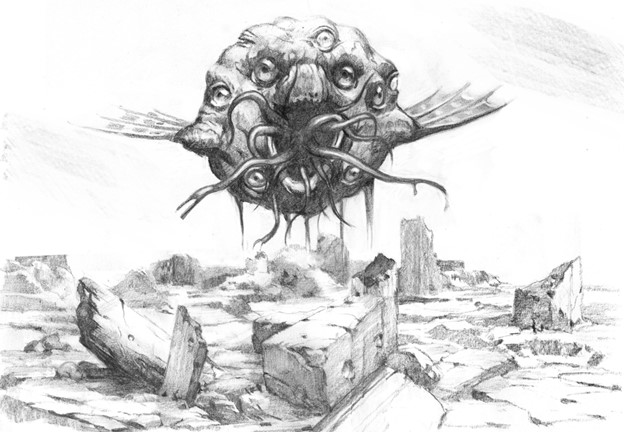
The section on “Artificial Beings” in the Master Atlas is a bit of mixed bag, but also contains some undeniably cool material. There are 7 different types of creatures classified as “Artificial” but I don’t think the category holds up well after a cursory inspection. There seems to be some fungibility between the words “artificial” and “construct” to the point of conflation.
So what are “Artificial Beings”?? In the first few paragraphs of the first entry, “Kaeden” we have this:
Like all constructs, Kæden cannot reproduce.
Further reading implies that many of the artificial beings were created in the First Era, mostly by Kaedena. Out of the seven though, only Kaeden, Gogor, Shards and Neng really meet the general definition of an “Artificial” being and then it confusingly states that:
Neng are able to reproduce, though may not interbreed with other races. In this way they qualify as a ‘race’,
I’ve written about N’eng here, and I think there is a strong argument that they should be moved to the Race section with the explanation that they were originally created, but have since developed through reproduction. They are certainly unlike immortal Shards, Kaeden that can “hibernate” or Gogor that were stored in jars for millennia. If you think about it, it implies that many of the races present on Kulthea were either created by the Althans or perhaps by the Lords of Orhan. Doesn’t that essentially make all races “artificial beings”?
The other three “artificial” creatures are: Sentinels, Golems and Elementals. Sentinels are “guarding statues”, immovable “golems” and I would argue that both should be categorized as true “Constructs”. The last, Elementals, are a curious entry in this category. Certainly they are summoned, and perhaps occur naturally via Essaence effects, but I’m not sure they belong here. A revamp of the Master Atlas could clump these in a “Elemental Creature” category (zephyr hounds, elemental demons etc) or perhaps under an expanded category of “Summoned Creatures”.
All in all this is a awkward category but I still love it. Kaeden, Shards and Gogor are unique, Shadow World specific monsters, that deserve more attention. I think there is room for even more unique creatures to define this setting and there is certainly room to reorganize the creatures presented in the Master Atlas. It’s clear that Terry generally avoided the standard fantasy creatures and leaned heavily into humanoids, Demons and servants of the Unlife. There seems to be few “Monsters of the Week” in Terry’s adventures, and in that spirit, any future works should reflect that ethos.
Certainly Shards are notable, but has anyone used Kaeden or Gogor in their SW adventure? Has anyone come up with a new creature that fits well into Shadow World and want to share?













